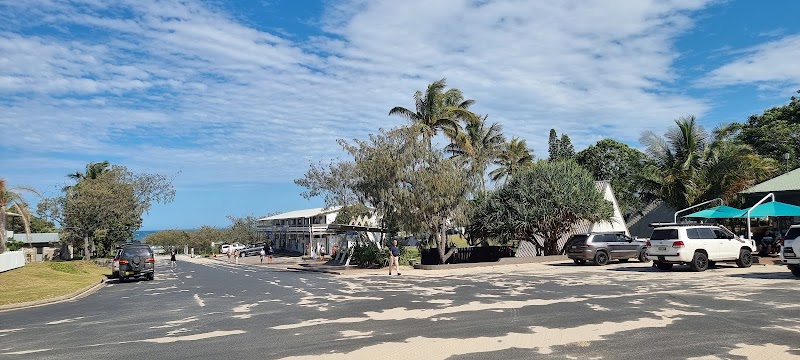Chasing Giants: Whale Watching Adventures in Hervey Bay’s Peak Migration Season
Experience the thrill of whale watching at Hervey Bay during the peak humpback migration season from July to November. This marine adventure offers intimate encounters with these majestic creatures in calm, sheltered waters, ideal for wildlife enthusiasts and first-timers alike.
Book Early for Peak Season
Reserve your whale watching tour well in advance from July to November, as operators fill up fast during peak migration.
Dress in Layers
Prepare for windy, cool conditions on the water by wearing moisture-wicking layers and bringing a windbreaker or waterproof jacket.
Respect Wildlife Guidelines
Follow vessel operators' instructions about approaching whales to ensure a safe and responsible viewing experience that protects animal welfare.
Bring Binoculars and Camera
Enhance your experience and documentation with binoculars for distant sightings and a waterproof or weather-resistant camera for unpredictable spray and light.
Chasing Giants: Whale Watching Adventures in Hervey Bay’s Peak Migration Season
Hervey Bay, Queensland, transforms each year from July to November into a marine spectacle as humpback whales gather in its calm waters during their migration. This place is not just a viewing spot—it's an immersive marine encounter where the ocean actively participates, with currents carrying these giants near the shore, daring you to meet them eye to eye. Here, the waves seem to pause, holding their breath, as these creatures breach, slap their tails, and sing their haunting songs. The bay’s gentle arms cradle the whales, offering refuge where mothers nurture calves and playful interactions unfold.
For an artifact of practical adventure, timing your visit during peak season is non-negotiable. Boats leave the harbor daily, equipped with expert guides who understand whale behavior and the environmental conditions unique to the bay. The water’s surface, often glassy, becomes a theater of powerful splashes and misty sprays, urging you to prepare for splashes that the sea occasionally throws your way.
Choosing the right vessel and operator can shape your experience profoundly. Look for companies committed to responsible wildlife interaction—rules limit how close boats can approach and how many can watch a single whale at once. This respects the whales' fiercely independent nature and ensures their habitat is disturbed as little as possible.
Practical tips? Dress in layered, quick-drying clothes. Even on sunny days, the wind can nip sharply out on the open water, and you’ll want sturdy shoes with good grip as decks can be wet and slippery. Bring a reusable water bottle to stay hydrated and binoculars for spotting distant blows and fins. Early morning trips often offer calmer seas and spectacular light, ideal for photography and quiet observation.
Hervey Bay’s whale watching is an adventure that demands both respect and enthusiasm. These mammals are wild and unpredictable; their actions challenge your patience and reward your attentiveness. Every dive and tail flick is a reminder that this is not a zoo, but a fierce natural performance staged just for those willing to meet it on its terms. Whether it’s your first or fifth time, the thrill holds firm: these giants of the deep require nothing less than full presence and admiration.
By blending excitement with preparation, you get more than a tourist experience—you engage in a marine wildlife adventure that is as educational as it is breathtaking. Plan carefully, listen to your guides, and keep your eyes wide: Hervey Bay invites you to witness nature’s epic migration where every sighting writes a fresh story on the ocean’s surface.
Nearby Trips
All Adventures
Boat Charters
Water Activities
Adventures near Hervey Bay
Discover the unique and memorable adventures that make Hervey Bay special.
Frequently Asked Questions
When is the best time to see whales in Hervey Bay?
The prime whale watching season runs from July through November, with peak migration usually between mid-August and late October, when mother and calf pairs dominate the bay.
How close can the boats get to the whales?
Regulations require boats to maintain a minimum distance of 100 meters from whales to avoid disturbing them, ensuring a respectful and safe encounter.
Are there any safety concerns on the whale watching tours?
Tours follow strict safety protocols, but the ocean can be unpredictable; wearing non-slip shoes, listening to guides, and being prepared for sudden weather changes are important.
Can children participate in whale watching tours?
Yes, many operators welcome families with children and provide life jackets and safety briefings; however, parents should assess their child's comfort with boat travel.
What wildlife besides whales might I see in Hervey Bay?
Dolphins frequently accompany tour boats, and seabirds like shearwaters and terns are common. Occasionally, turtles and dugongs may also be spotted nearshore.
Do whale watching tours operate in all weather conditions?
Tours run in most weather, but rough seas or severe weather can cause cancellations for safety reasons. Early booking and flexible plans are recommended.
Recommended Gear
Windbreaker or Waterproof Jacket
Essential to stay warm and dry during windy and potentially wet boat trips.
Non-slip Boat Shoes
Provide stability on wet, slippery decks and keep feet comfortable.
Binoculars
Helpful for spotting distant whale blows and behaviors beyond the boat’s immediate vicinity.
Reusable Water Bottle
Staying hydrated is key on the ocean, especially if trips last several hours.
Local Insights
Hidden Gems
- "Double Island Point Lookout – offers panoramic views of migrating whales from shore on calm days."
- "Torquay Beach – quiet spots where whales can sometimes be seen spouting near the shoreline."
Wildlife
- "Manta rays occasionally glide beneath tour boats during migration season."
- "Local seabirds like the white-bellied sea eagle circle above, adding aerial drama to the scene."
History
"Hervey Bay has been an important spot for Indigenous Butchulla people for centuries, their cultural stories often feature the whale as a powerful totem and guardian of the sea."

